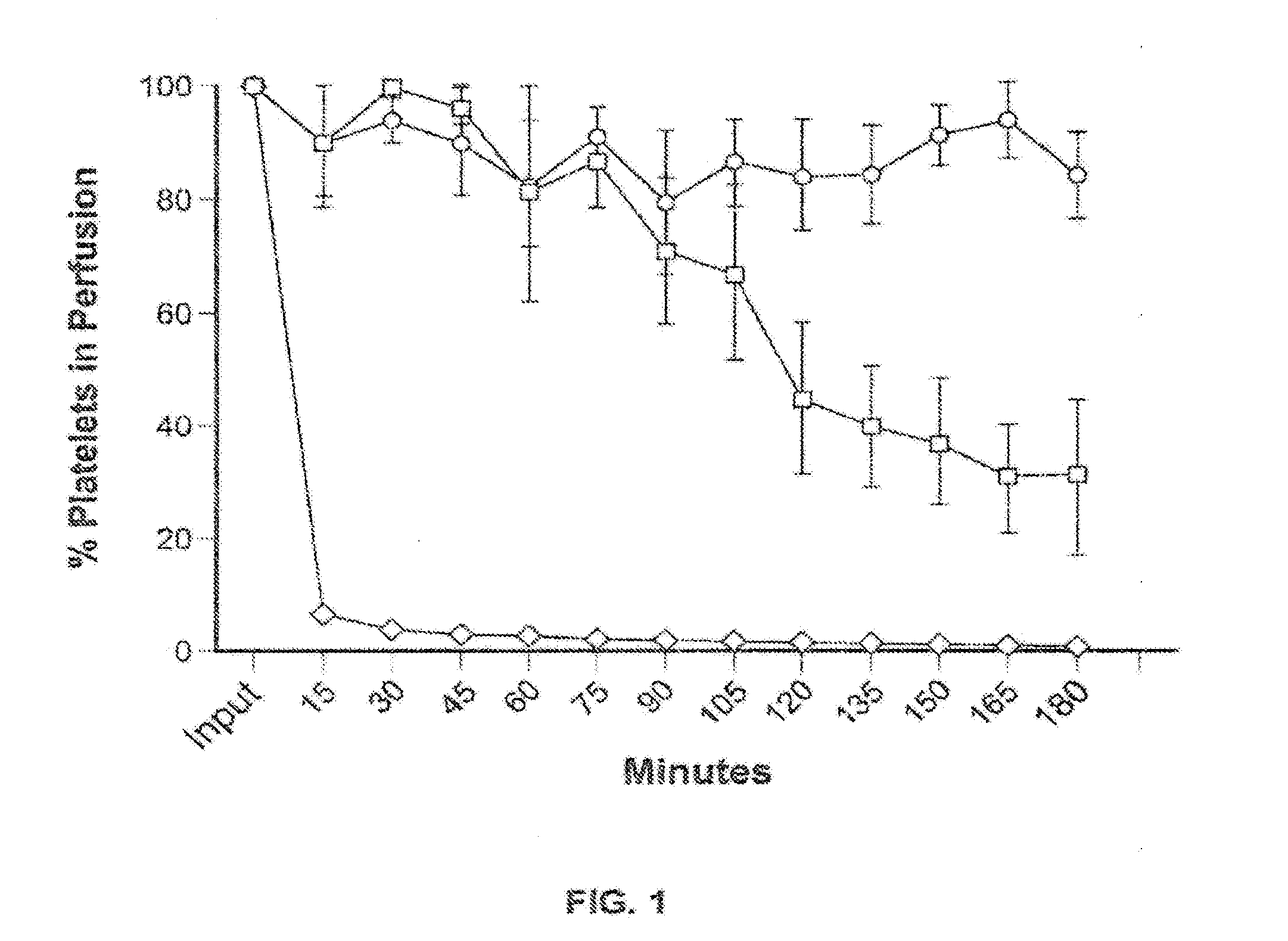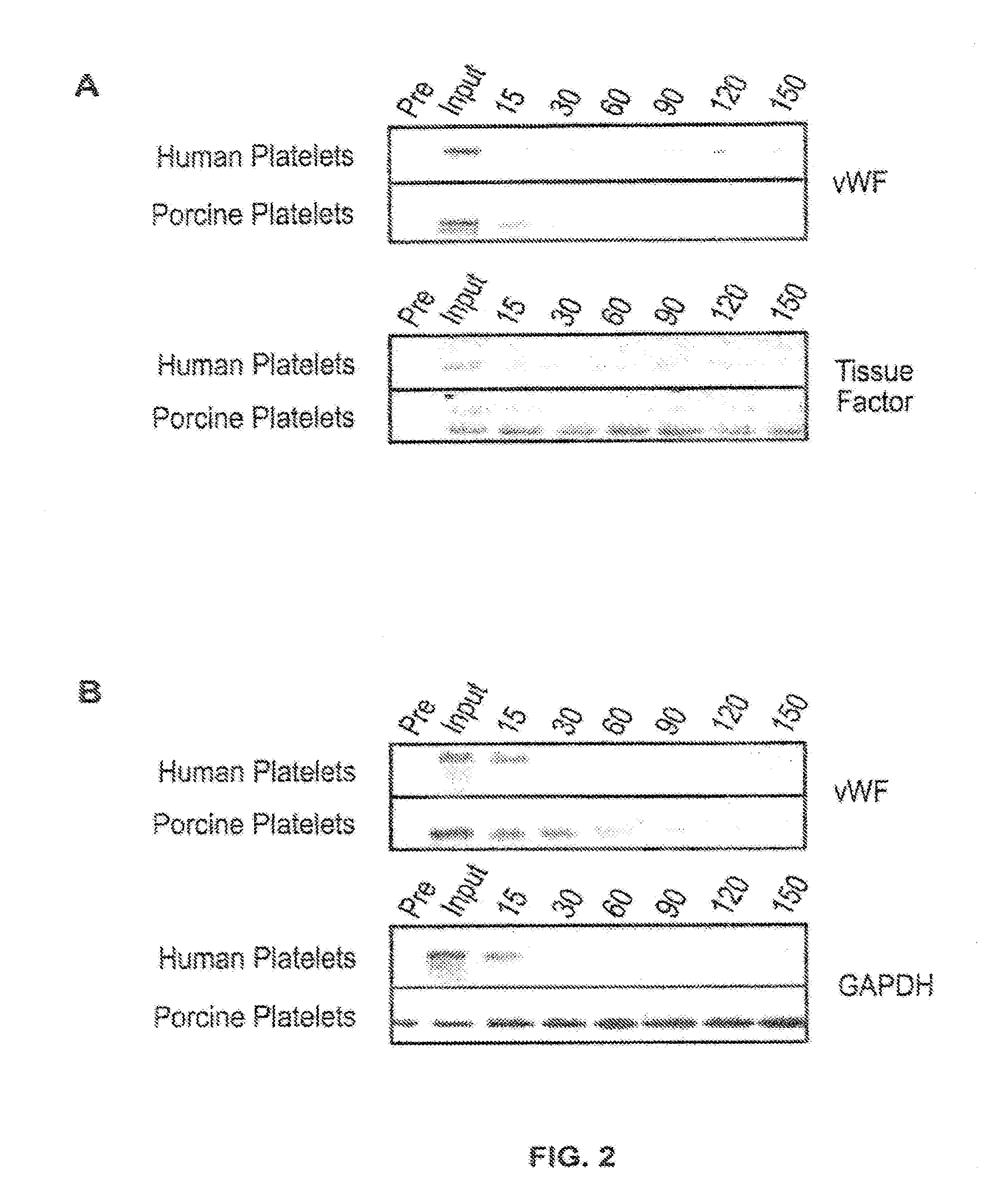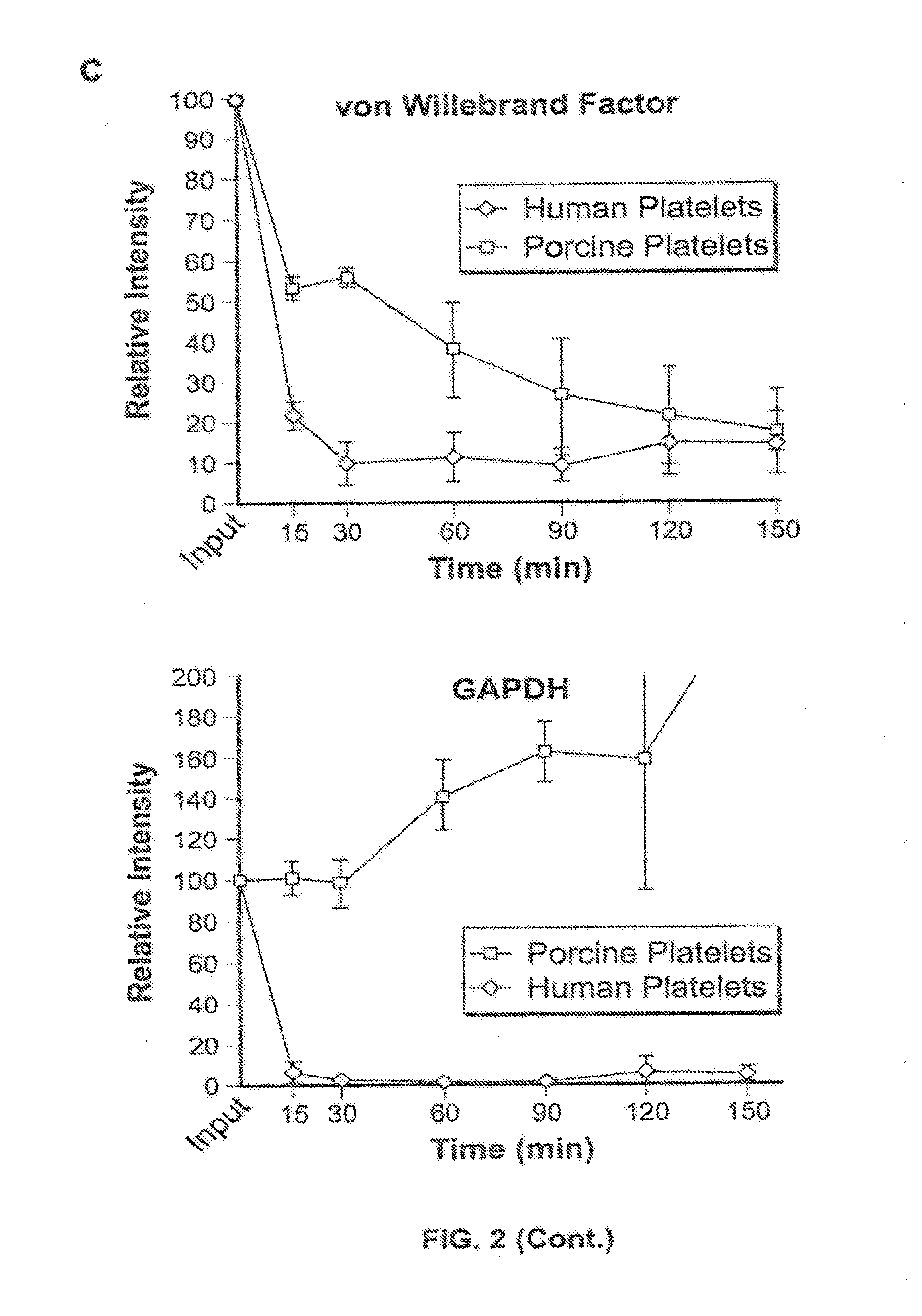Methods of modulating thrombocytopenia and modified transgenic pigs
a technology of thrombocytopenia and transgenic pigs, which is applied in the field of modulating thrombocytopenia and modified transgenic pigs, can solve the problems of unmodified pig tissue into human or other primate tissue, insufficient suitable organs for transplantation, and inability to adapt to human or other primate patients with liver disease or liver failure, etc., to reduce the expression of asgr1, reduce the premature separation of skin related products, and increase the duration of period
- Summary
- Abstract
- Description
- Claims
- Application Information
AI Technical Summary
Benefits of technology
Problems solved by technology
Method used
Image
Examples
example 1
Porcine Liver Procurement
[0123]Livers were obtained from domestic or genetically modified pigs. Domestic pigs were predominantly of the Landrace breed and human blood group 0 positive. Genetically modified pigs included GTKO / hDAF pigs described elsewhere herein. Pigs were premed icated, intu bated and anesthetized with propofol and placed in the supine position. A midline incision to the abdomen was made. Ligamentous attachments to the liver were taken down. The portal vein and hepatic artery were cannulated and flushed with 2 liters of cold histidine-tryptophan-ketoglutarate solution (Essential Pharmaceuticals, LLC). Livers were removed from pigs and stored in histidine-tryptophan-ketoglutarate solution on ice at 4° C. until being placed on the liver perfusion circuit. Cold-ischemia time ranged from 45 minutes to three hours.
[0124]In certain experiments, porcine livers were obtained from abbatoirs. Porcine livers from abbatoirs were flushed with histidine-tryptophan-ketoglutarate s...
example 2
Platelet Preparation
[0125]For in vitro experiments, fresh whole human blood in anticoagulant citrate dextrose was centrifuged at 2000×g for 3 minutes. The platelet enriched supernatant was removed and centrifuged at 5000×g for 5 minutes. The platelet containing pellet was resuspended in phosphate buffered saline (PBS). Platelets were labeled with carboxyfluorescein succinimidyl ester (CFSE) (Invitrogen, Carlsbad Calif.) and counted using a hemocytometer.
[0126]Porcine platelets were isolated from fresh porcine blood in anticoagulant citrate dextrose in a manner similar to the human platelet isolation.
[0127]For ex vivo experiments, approximately 4×1011 human platelets, less than 6 days from isolation and stored at 20 to 24° C. with gentle agitation were purchased as platelet-rich plasma from the Indiana Blood Center, Indianapolis, Ind., USA. For ex vivo liver perfusion, approximately 1×1011 human platelets were washed two times in sterile phosphate-buffered saline (PBS) containing the...
example 3
Liver Sinusoidal Endothelial Cell (LSEC) Isolation
[0128]Cold porcine livers were kept in a chilled container (4° C.). Livers were perfused with 0.025% of collagenase Type IV from Clostridium histolyticum (Sigma®, St. Louis, Mo.) at 37° C. The first 600 ml of perfusate was removed followed by continuous perfusion of the liver with collagenase at 37° C. for 20 minutes. Perfusion was interrupted for 30 minutes to allow removal of collagenase that had pooled around the liver. Perfusion was resumed at 10 ml / min with gentle manipulation of the liver. Digestion was stopped at 45 minutes or when fissures or soft spots were observed on the liver surface. At the end of perfusion, newborn calf serum was used to quench enzyme activity (1 / 10 volume). The perfusate was centrifuged at 400 g for ten minutes at room temperature. Supernatant was removed. The cell pellet was resuspended in RPMI+0.02% EDTA. The cell suspension was centrifuged at 400 g for 10 minutes at 4° C. The pellet was resuspended ...
PUM
 Login to View More
Login to View More Abstract
Description
Claims
Application Information
 Login to View More
Login to View More - R&D
- Intellectual Property
- Life Sciences
- Materials
- Tech Scout
- Unparalleled Data Quality
- Higher Quality Content
- 60% Fewer Hallucinations
Browse by: Latest US Patents, China's latest patents, Technical Efficacy Thesaurus, Application Domain, Technology Topic, Popular Technical Reports.
© 2025 PatSnap. All rights reserved.Legal|Privacy policy|Modern Slavery Act Transparency Statement|Sitemap|About US| Contact US: help@patsnap.com



